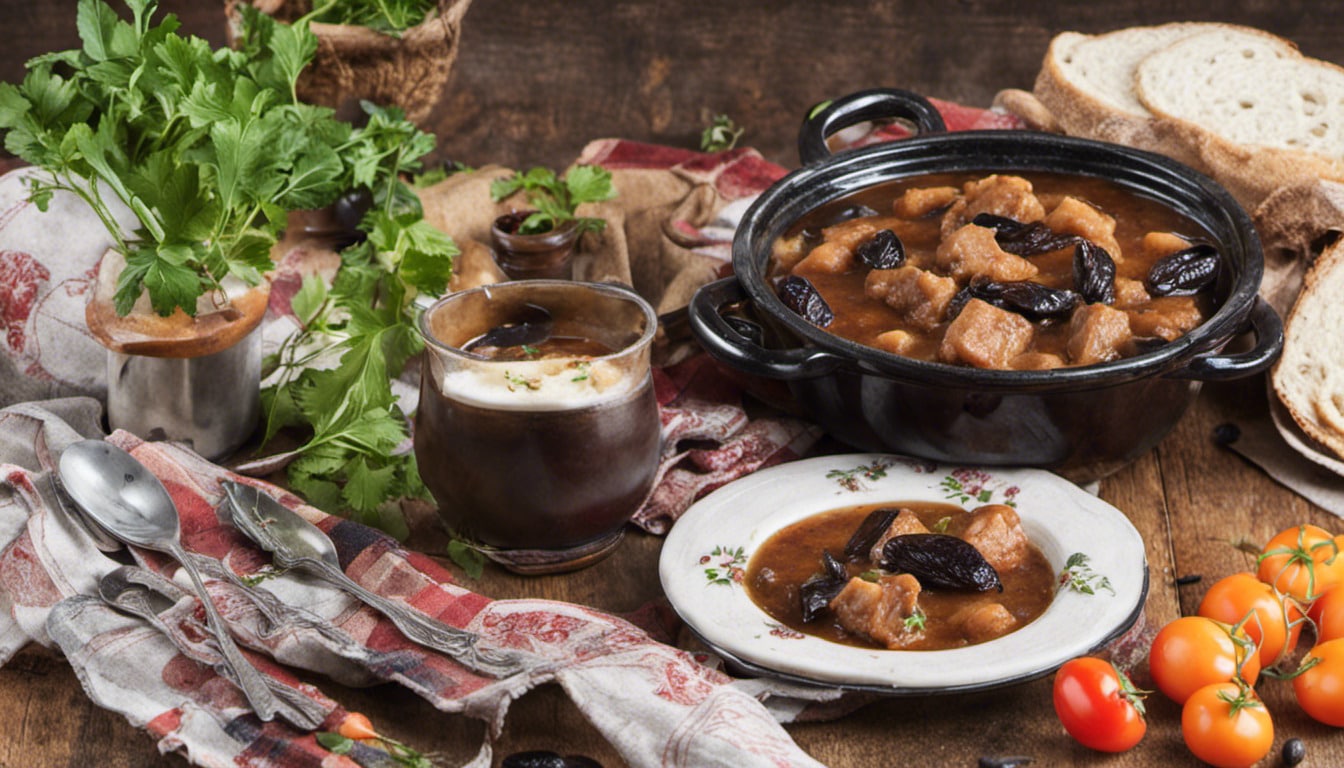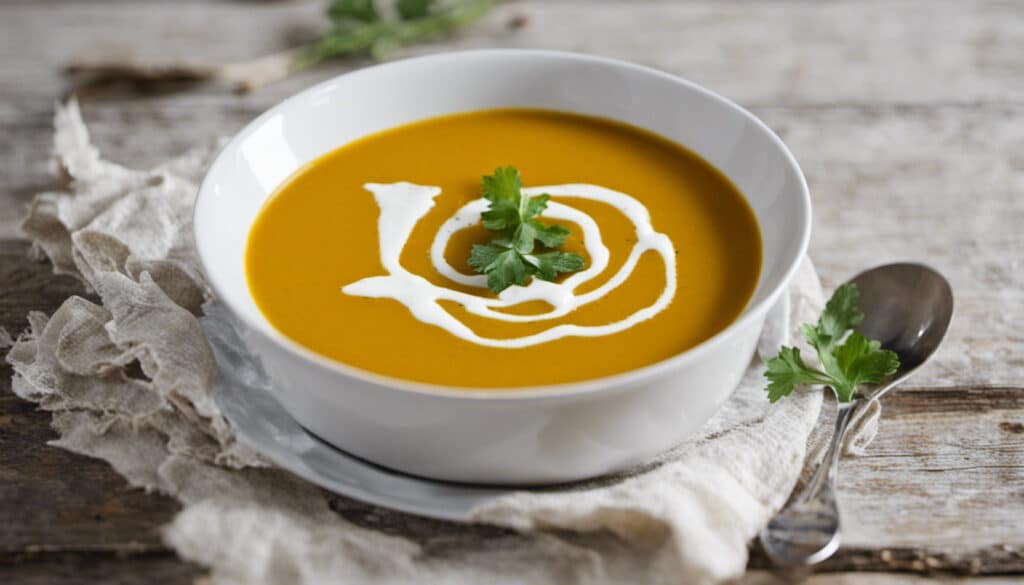| Prep: 20 mins | Cook: 2 hrs – 3 hrs | Difficulty: Medium | Serves: 6 |
| kcal | fat | saturates | carbs |
| 408 | 19g | 6g | 24g |
| sugars | fibre | protein | salt |
| 17g | 3g | 29g | 1.2g |
Why I Love French Pork Stew with Prunes
A Savory Blend of French Tradition and Southern Comfort
One of my favorite dishes to prepare and share with my readers is a French recipe – the tongue-tingling, heart-warming Pork Stew with Prunes. This beautiful fusion of traditional French cooking techniques and hearty ingredients creates a dish that is both comforting and satisfying.
Pork Stew with Prunes is a dish that is characteristically French in nature, bursting with the flavors of boneless pork shoulder, pitted prunes, onions, and garlic. These ingredients are lovingly enveloped in a rich and velvety stew made from red wine, chicken broth, tomato paste, and a mélange of herbs including dried thyme, rosemary, and bay leaves.
Linking French Ancestry and Creole Influence
Although the main inspiration for this recipe comes from my French heritage, it is impossible not to acknowledge the Creole touch that permeates through my cooking. Born and raised in Louisiana, my recipes tend to blend the sophistication of French cuisine with the homely comfort of Creole food. The subtle seasoning of salt, pepper, and herbs in the Pork Stew with Prunes is reminiscent of dishes that you might see in a traditional Southern kitchen.
One cannot help but admire the ability of renowned chefs such as Julia Child to weave together the culinary threads of different cultures and turn something traditionally French into an American classic.
From Elegance to Heartiness: Perfect Balance
The Pork Stew with Prunes is not just a recipe; it’s a culinary journey, combining the elegance of French dining with the warm, robust flavors of the South. When served alongside a crusty bread or over creamy mashed potatoes, this hearty stew becomes a satisfying, complete meal – one that invokes the spirit of family, love, and warmth that underpins cooking, regardless of where you are from.
Finally, remember: although this recipe has roots in places far from us, what matters most is the love and passion we put into our food. That passion transcends borders, making our dishes something more than just ingredients and preparation steps.
What You’ll Need
- 1.5 lbs of boneless pork shoulder, cut into chunks
- 1 cup of pitted prunes
- 2 tablespoons of olive oil
- 2 medium onions, diced
- 4 garlic cloves, minced
- 1 cup of red wine
- 2 cups of chicken broth
- 1 tablespoon of tomato paste
- 1 teaspoon of dried thyme
- 1 teaspoon of dried rosemary
- 2 bay leaves
- Salt and pepper to taste
Method
Step One
Begin by seasoning the chunks of boneless pork shoulder with salt and pepper. Ensure the meat is evenly coated on all sides, then set aside for later.
Step Two
Heat the 2 tablespoons of olive oil in a large, heavy-bottomed pot over medium-high heat. Once the oil is hot, add the pork chunks into the pot. Sear the meat until it is well-browned on all sides, then remove it from the pot and set it aside.
Step Three
In the same pot, add the diced onions and minced garlic. Cook them until they are soft and translucent, ensuring that you stir them occasionally to prevent burning. This process should take around 5 minutes.
Step Four
Next, add the tomato paste into the pot and stir it well to mix it with the onions and garlic. Then pour in the cup of red wine. Let the wine simmer for a few minutes, scraping the bottom of the pot to release any bits that may have stuck to it during the previous steps.
Step Five
Once the wine has simmered, return the seared pork chunks to the pot along with the chicken broth, pitted prunes, dried thyme, dried rosemary, and bay leaves. Bring the stew to a boil, then reduce the heat and let it simmer.
Step Six
Let the stew simmer for about 1 to 2 hours or until the pork is tender and the flavors have melded together. You should stir the stew occasionally during this process.
Step Seven
Before serving, remove the bay leaves from the stew and adjust its seasoning as needed with additional salt and pepper. Serve the stew hot and enjoy its rich flavors.




